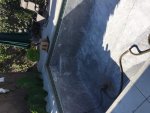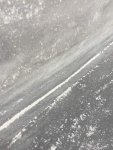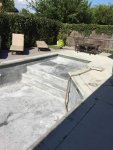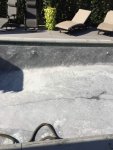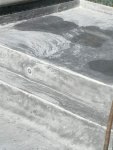- Sep 26, 2016
- 225
- Pool Size
- 11000
- Surface
- Plaster
- Chlorine
- Salt Water Generator
- SWG Type
- Jandy Truclear / Ei
Pool is almost exactly one year old. Build date was 9/1/16. Plaster was colored at the lowest possible color/darkness or a 1 is what the builder called it. So the issue is that the color was changing, as it was turning a lighter white color. The pictures are the best I could get after draining. I just want to try and understand what could have caused this? The plaster guy sat with me and he tried a few things to the plaster to try and get a change with no luck, he said he didn't know what caused it and offers no warranties. He poured MA in the tanning area and sanded a portion of the tanning area with no change. He took a test with strips and found that my levels were all in his "range" except the CL levels were ~7. I told him that was my target range during the peak of summer as I lose CL during the heat of the day, etc. He really didn't pay no mind to it when I was talking with him, however when he spoke to the builder he blamed the color change on me having a "elevated CL level" being off the charts. I spoke with the builder and told him about the TFP site and showed him some of the data in pool school and expected levels, etc.. He didn't go for it, and stated ~1.5 CL levels for personal pools and ~3 CL for public pools are what are usually done. The next day he did some research and found some of his colleagues in the business are running CL ~7 and that is normal these days, he called me and offered a re-plaster job for a minimal cost, or what it's going to cost him for materials and no labor rates. I agreed to this, however I am feeling dumbfounded as I followed the TFP specs to a tee. Any feedback is appreciated.
Startup procedure I did are as followed:
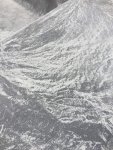
builder poured in one gallon MA after filled.
I placed pucks in skimmer baskets each week to maintain some CL.
waited 30 days post fill to add salt.
then after the 30 days I followed the TFP ways in getting TA in check, CYA, CL generator, lowered PH from 8 - ~7.2 each week.
Startup procedure I did are as followed:

builder poured in one gallon MA after filled.
I placed pucks in skimmer baskets each week to maintain some CL.
waited 30 days post fill to add salt.
then after the 30 days I followed the TFP ways in getting TA in check, CYA, CL generator, lowered PH from 8 - ~7.2 each week.


